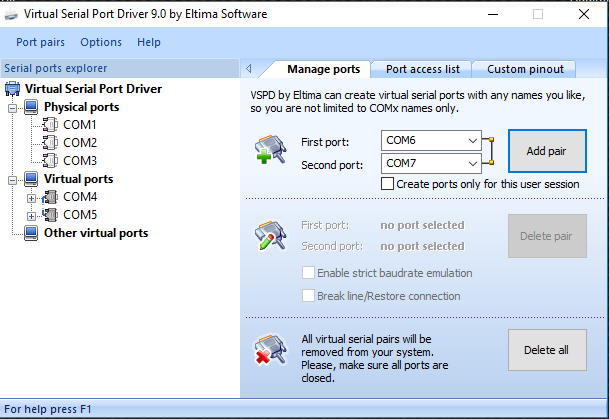Many different types of computing hardware that you may have used share a common trait. Whether using terms such as serial port, COM interface, FTDI chip or RS232 protocol, they all make use of serial communication in some way. While perhaps more prevalent in legacy devices and embedded systems, serial communication is alive and well in the 21st Century.
Serial communication concerns the transmission of data in a serial manner, meaning it is sent and received one bit at a time. It is the most basic form of electronic data transmission and was the primary form of communication between machines in the first generations of personal computers.
Modern laptops do not usually come equipped with a serial port. USB interfaces and connectors are the de-facto standards for consumer computers and their associated peripheral devices. Serial communication, however, is alive and well in many electronic devices targeted at the commercial and industrial markets.
Many production facilities rely on industrial automation systems to keep a wide range of businesses running. These systems are comprised of numerous electronic devices that are networked together to provide monitoring, oversight, and control of industrial processes and procedures.
A large number of these pieces of industrial equipment and their monitoring sensors make use of serial communication. They are outfitted with serial ports through which they communicate with each other as well as the computers that control the systems. Serial communication is a primary means of transmitting data between these critical industrial components and the serial software applications that interact with them.
Serial communication is also widely used in embedded systems in a variety of ways
Some of the uses of serial communication in embedded systems are:
- Enabling communication between different parts of the device;
- Downloading firmware updates to maintain peak performance;
- Supplying an interface for a debugging or testing console;
- Establishing communication with external devices.
Implementing serial communication functionality in an embedded system requires the developers and engineers involved to have an understanding of the underlying serial protocols used in this form of data transmission. The most common protocols you will come across are the RS232/RS422/RS485 standards.
These protocols have powered serial communication and have made it extremely popular in industrial implementations and embedded computers. While you might not see many legacy RS232 ports around, serial communication is still enabled by devices such as USB to serial converters.
Though there are many communication interfaces available which offer high-speed connectivity, serial ports will not be disappearing for quite some time. They have some advantages over alternatives such as USB, Ethernet, and wireless. Serial ports are easy to use and do not require custom drivers. Most operating systems provide native support for serial interfaces.
There is one major stumbling block for software developers and hardware engineers who need to interact with serial ports. The lack of serial ports on today’s modern laptops can impede their ability to develop, test, and debug their products.
You can make use of hardware devices that convert serial signals to USB so they can be received by your laptop. They are easy to use. Simply plug in the serial connection and connect the converter to the USB port on your computer. You can now use serial software to interact with the device attached to your converter.
An elegant software solution to the lack of COM ports exists which provides serial interfaces to machines that are not equipped with any. That solution is to use virtual serial or COM ports.
Let’s take a look at a couple of software tools that offer some advantages to individuals involved with developing serial application and devices or those working with embedded systems.
Virtual Serial Ports provide applications with the ability to connect to serial devices even if the computer they are hosted on does not possess any physical COM interfaces. When using a virtual serial port, a computer is configured to send and receive serial data over the Internet or a LAN rather than through a direct connection to a serial device. In order to create the virtual interfaces, you need to use virtual serial port software such as Virtual COM Port Driver (VSPD) from Eltima Software.
VSPD enables you to easily create virtual serial ports and connect them through a virtual null modem cable. You can create any number of virtual ports which fully emulate physical serial ports. It allows you to easily create and manage ports and enables serial applications to interact with the virtual ports and exchange data with network-attached serial devices. This means that you do not need to be in physical proximity of a serial device in order to access its full functionality.
VSPD is available in a Standard and Pro license, both of which offer a 14-day trial.
Eltima Software also offers Serial Port Monitor (SPM) which is an excellent tool for monitoring and testing serial ports and devices. In tandem with Virtual Serial Port Driver, these two tools can be of considerable help when developing and testing serial devices and applications. Get them in your software toolbox before tackling your next serial project.
